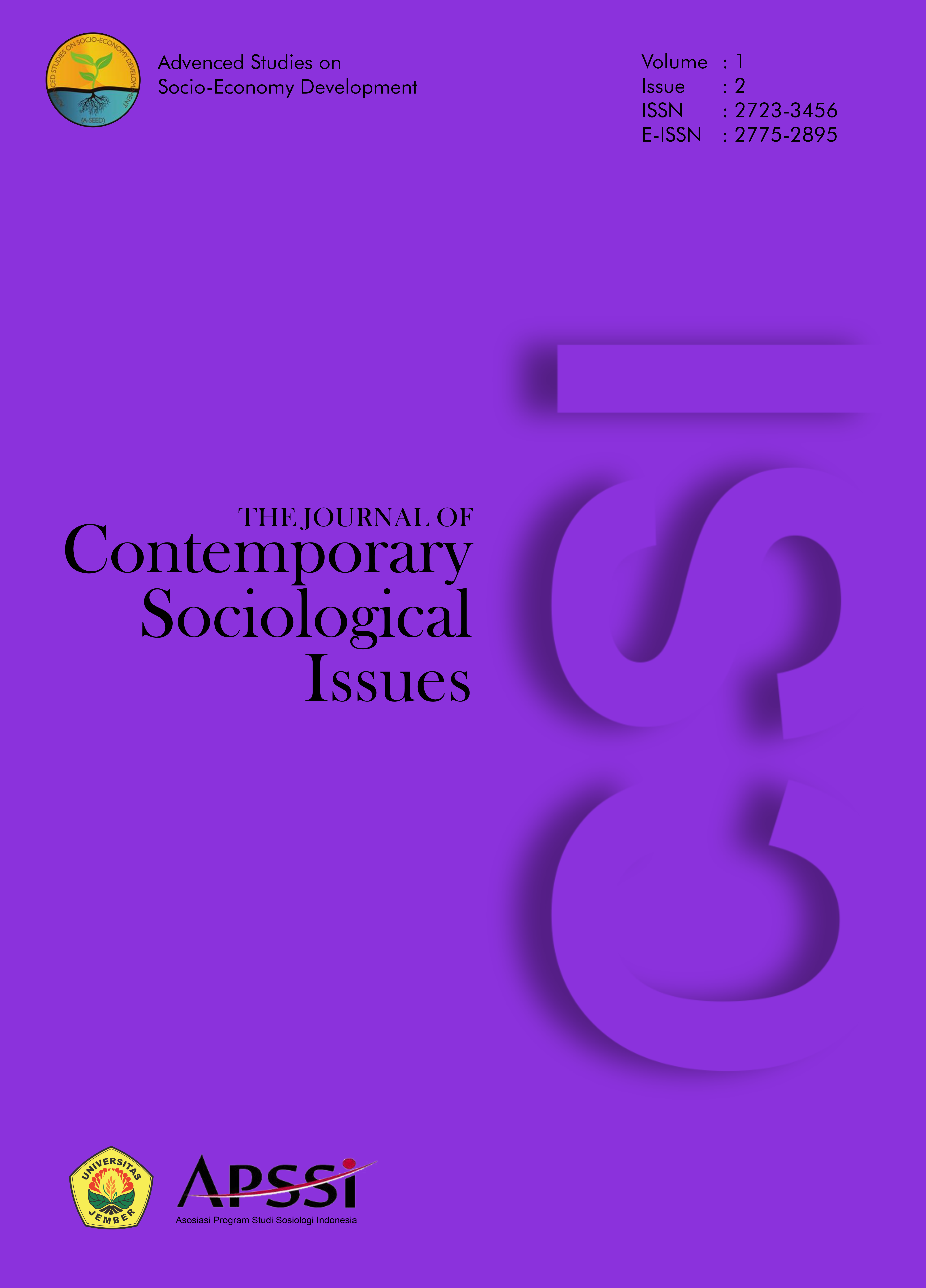The Third Space Formation Of Hindu In Sidoarjo
Abstract
This article discusses the formation of a ‘third space’ and the articulation of Hindu cultural identity in Sidoarjo, East Java. The hegemonic discourse generally places restrictions on the articulation of religion and related issues. Notwithstanding, minority groups have tried to maintain and represent their Hindu identity. This paper addresses this issue through ethnographic research, adopting a post-colonial perspective, drawing particularly on Homi K. Bhabha’s theory of the third space (space in between). The results showed that Hindus have interpreted and articulated their cultural space through identity negotiation. In the Sidoarjo regency, there are three primary categories of Hinduism: Hinduism from Sidoarjo; Hinduism from outside Sidoarjo; and Hinduism from Bali. Despite differences between them, Hindus have worked together to develop strategies to challenge the hegemonic discourse, developing a third spatial formation that is shaped by cultural codes, social networks, educational institutions, military structure, and ogoh-ogoh. As such, the Hindus third space is productive, dynamic, and negotiatiable.
Keywords: Hindu Community, Postcolonial Identity, Third Space
References
Clifford Geertz, Tafsir Kebudayaan (Yogyakarta: Kanisius, 1992).
Hammersley, Martin & Paul Atkinson, Ethnography Principles in Practice, third ed (New York: Taylor & Francis e-Library, 2007).
Homi K Bhabha, The Location of Culture (London: Rouledge, 1994).
M Foucault, Arkeologi Pengetahuan (Yogyakarta: IRCiSoD, 2012).
M S Al Fattah, Tradisi Upacara Ogoh-ogoh (Surabaya: Departemen Antropologi Universitas Airlangga, 2017).
Madan Sarup, Posstrukturalisme dan Posmodernisme, Sebuah Pengantar Klasik (Yogyakarta: Penerbit Jendela, 2003).
Martin Lukitto Sinaga, IdentitasPoskolonial “Gereja Suku” dalam Masyarakat Sipil (Yogyakarta: LkiS, 2004).
Michel Picard, Bali: Pariwisata Budaya dan Budaya Pariwisata (Jakarta: kepustakaan Populer Gramedia, 2006).
Minako Sakai, Kacang Tidak Lupa Kulitnya: Identitas Gumay, Islam, dan Merantau di Sumatera Selatan (Jakarta: Yayasan Pustaka Obor Indonesia, 2017).
Richard King, Agama, Orientalisme, dan Poskolonialisme (Yogyakarta: Qalam, 2001).
Sutrisno & Hendar Putranto, Hermeneutika Pascakolonial Soal Identitas (Yogyakarta:
Kanisius, 2008).
Thomas A Reuters, Custodians of The Sacred Mountains: Budaya dan Masyarakat di Pegunungan Bali (Jakarta: Yayasan Obor Indonesia, 2005).
Tim Penelusuran Sejarah Sidoarjo, Jejak Sidoarjo dari Jenggala ke Suriname (Sidoarjo: Ikatan Alumni Pramong Praja Sidoarjo, 2006).
Siswanto, “Identifikasi penggunaan Lahan Berdasarkan Sumber Prasasti Abad Ke-11 Masehi di Jawa Timur” (2015) Purbawidya: Jurnal Penelitian dan Pengembangan Arkeologi.
Hery Prasetyo, Development And Uneven Development (Does Democratization Work?)
(2012).

This work is licensed under a Creative Commons Attribution-ShareAlike 4.0 International License.









